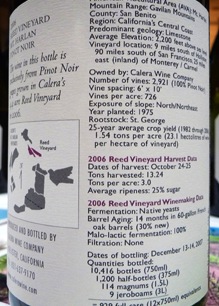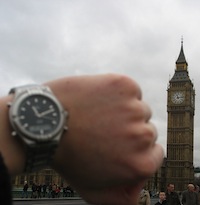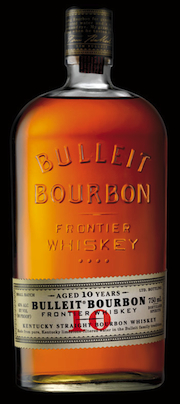Dunhill is a historic name in cigars, but you could argue the name hasn’t fully lived up to its rich legacy recently. Prior to the communist takeover of Cuba, the Dunhill shop in London had exclusive marketing and distribution agreements with various Cuban cigar makers, including Montecristo, Romeo y Julieta, and Partagas. (I smoked a 70-year-old one here.)
 The cigars were popular with such legendary smokers as King George VI and Sir Winston Churchill, who reportedly got a call from Dunhill shop employees immediately after a German air raid hit the store to reassure the prime minister that his cigars in storage had been relocated prior to the raid. After the Cuban revolution, Dunhill retained a number of “Dunhill Selección” exclusive sizes and also had its own Don Alfredo line produced at the H. Upmann factory in Havana.
The cigars were popular with such legendary smokers as King George VI and Sir Winston Churchill, who reportedly got a call from Dunhill shop employees immediately after a German air raid hit the store to reassure the prime minister that his cigars in storage had been relocated prior to the raid. After the Cuban revolution, Dunhill retained a number of “Dunhill Selección” exclusive sizes and also had its own Don Alfredo line produced at the H. Upmann factory in Havana.
Later, in the early 1980s, Dunhill worked out a deal with Cubatbaco to produce cigars under the Dunhill name. Those cigars, whose main competition was Cuban-made Davidoffs, were produced until 1991, but they are still among the most prized cigars today.
Since then the name, under the control of the British American Tobacco company and separate from the London shop, has bounced around with cigars by Toraño and Altadis being sold under the Dunhill name. The new Dunhill Aged Reserva Especial 2003, introduced at the 2012 IPCPR Trade Show, is now made at the Dominican factory of General Cigar, which has taken over distribution.
The Dunhill Aged Reserva blend features a Connecticut shade-grown wrapper, Connecticut broadleaf binder, and Dominican filler from the 2003 crop. It comes in one size, a Robusto Grande (5.5 x 54), that sells for $15 each in ornate boxes of 10.
The attractive cigar features double bands around a slightly shiny wrapper. It’s the kid of classic styling you’d expect from a cigar bearing the Dunhill name. Construction was excellent on two of the three samples I smoked, but on one the wrapper cracked badly. I’m wiling to write that off as a function of some temperature changes, but you should be aware that the wrapper is quite fragile.
The Robusto Grande features light honey, cedar, straw, slight leather, and a dampness reminiscent of Davidoff. It’s a pretty mild cigar that starts out mild and refined and occasionally touches on bland. Still, throughout, it’s well-balanced, and never harsh or even a little bitter. A friend described the Dunhill Aged Reserva Especial 2003 as a “leathery Davidoff” and I don’t think that’s far off. And it’s probably not a bad thing for Dunhill, since it’s competing for the same part of the market as the Dominican-made Davidoffs.
If you enjoy full-bodied Nicaraguan smokes, this isn’t the cigar for you. If you’re looking for a balanced, refined, mild cigar with a little more complexity than your normal beginner’s smoke, however, it’s worth a try, even if the price is a little steep. That earns the Dunhill Aged Reserva Especial 2003 a rating of three and a half stogies out of five.

[To read more StogieGuys.com cigar reviews, please click here.]
–Patrick S
photo credit: Stogie Guys


 The cigars were popular with such legendary smokers as King George VI and Sir Winston Churchill, who reportedly got a call from Dunhill shop employees immediately after a German air raid hit the store to reassure the prime minister that his cigars in storage had been relocated prior to the raid. After the Cuban revolution, Dunhill retained a number of “Dunhill Selección” exclusive sizes and also had its own Don Alfredo line produced at the H. Upmann factory in Havana.
The cigars were popular with such legendary smokers as King George VI and Sir Winston Churchill, who reportedly got a call from Dunhill shop employees immediately after a German air raid hit the store to reassure the prime minister that his cigars in storage had been relocated prior to the raid. After the Cuban revolution, Dunhill retained a number of “Dunhill Selección” exclusive sizes and also had its own Don Alfredo line produced at the H. Upmann factory in Havana.

 If you take a look at this wine label (which I’ll readily admit is hardly typical) you’ll see tons of information, virtually all of which could be just as easily at home on a cigar box: type of grapes (or tobacco), location of vineyards (or farms), yield per acre, year originally planted, date of harvest, aging information, blend information, date bottled (or boxed), and quantity made.
If you take a look at this wine label (which I’ll readily admit is hardly typical) you’ll see tons of information, virtually all of which could be just as easily at home on a cigar box: type of grapes (or tobacco), location of vineyards (or farms), yield per acre, year originally planted, date of harvest, aging information, blend information, date bottled (or boxed), and quantity made.

 Needless to say, I was pleased to try a pre-release sample offered by Bulleit’s marketing people. Bulleit 10 (featuring a white label) is made at Four Roses Distillery, maker to some of my other go-to bourbons. It sells for $45 per bottle, a significant increase from original (orange label) which can be found for around $25.
Needless to say, I was pleased to try a pre-release sample offered by Bulleit’s marketing people. Bulleit 10 (featuring a white label) is made at Four Roses Distillery, maker to some of my other go-to bourbons. It sells for $45 per bottle, a significant increase from original (orange label) which can be found for around $25. Patrick Ashby
Co-Founder & Editor in Chief
Patrick Ashby
Co-Founder & Editor in Chief Patrick Semmens
Co-Founder & Publisher
Patrick Semmens
Co-Founder & Publisher George Edmonson
Tampa Bureau Chief
George Edmonson
Tampa Bureau Chief